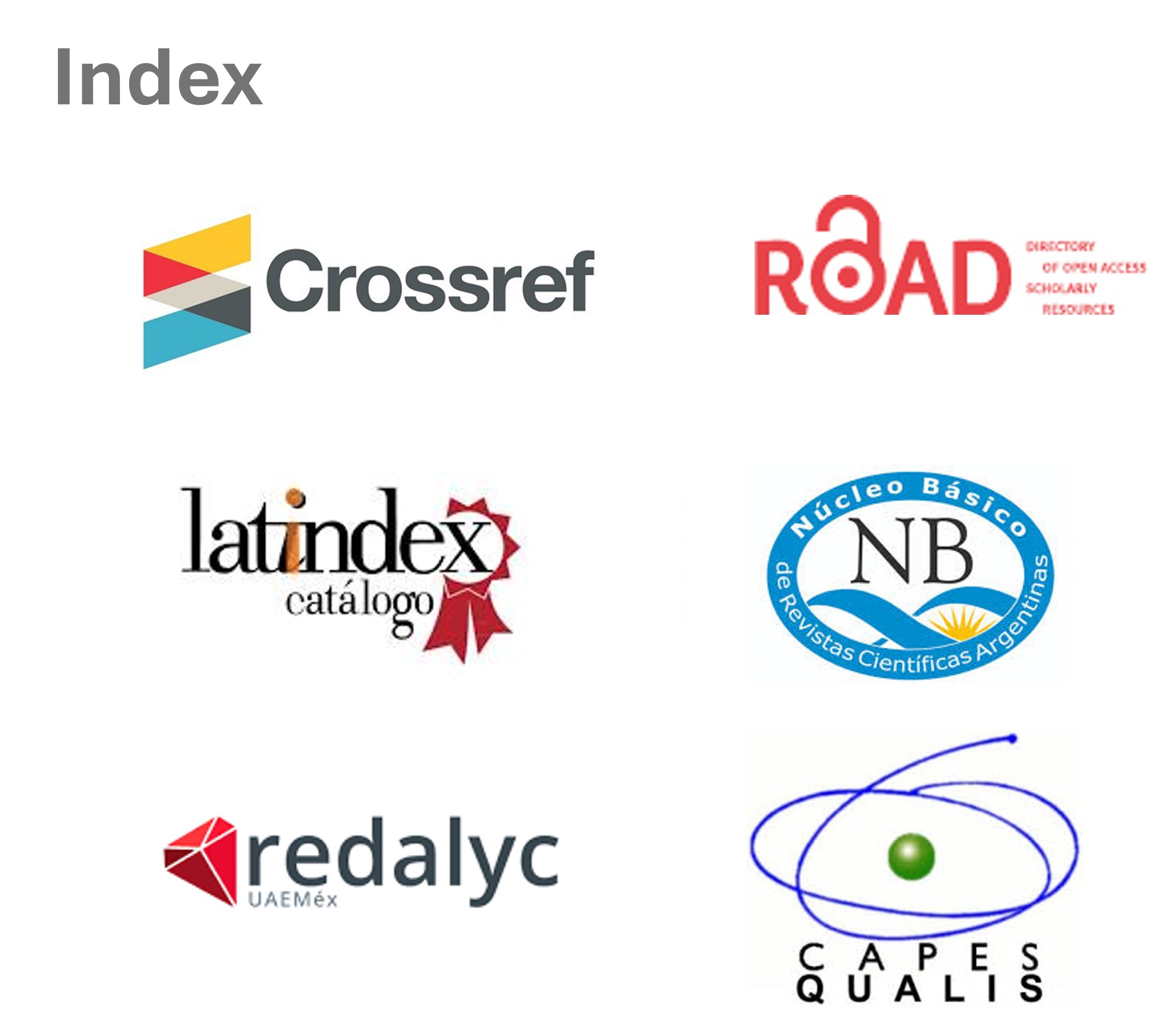The actors network of propositions for the regulation of nanotechnology in Brazil
DOI:
https://doi.org/10.48160/18517072re44.118Keywords:
actor-network, advocacy coalitions, regulation, nanotechnology, BrazilAbstract
Nanotechnology as a public policy has been fomented in Brazil since the beginning of the 2000s. One of the policy actions was the launch of the Brazilian Nanotechnology Initiative, whose main implementation strategy is Sisnano –a network of Research and Development laboratories that stimulates the interface between universities and business. The political networks established to advance the area had coordination of interests in a governance between public agencies and educational and research institutions. Regulatory initiatives have emerged on two fronts that are visible in a public hearing in June 2015. One of the fronts is the NANOREG, which Brazil adhered to in 2014 and seeks to harmonize international regulation. The bills that are processed in the Brazilian Congress form the other. Thus, this paper maps the networks of scientists, politicians, and institutions involved in policy and regulatory processes. The Actor-Network Theory identifies actors’ positions and relations in processes. In addition, the positions of the actors involved in the debate are evaluated from the perspective of the Advocacy Coalitions Framework. As a result, it has been found that the actor’s relationships on the side favorable to NANOREG are rather cohesive. In the debate of the issues, the conflict between divergent points of view revealed hidden problems on the regulation of nanotechnology in Brazil.
References
Antoniou, P., A. Pitsillides (2007), “Understanding complex systems: a communication networks perspective”, Technical Report tr-07-01, Department of Computer Science, University of Cyprus.
Azoulay, D. (2014), “Managing the unseen: opportunities and challenges with nanotechnology”, Swedish Society for Nature Conservation Report, Estocolmo, Naturskyddsföreningen.
Callon, M. (1986a), “Some elements of a sociology of translation: domestication of the scallops and the fishermen of St Brieuc Bay”, em Law, J. (ed.), Power, action and belief: a new sociology of knowledge?, Londres, Routledge, pp. 196-223.
Callon, M. (1986b), “The sociology of an actor-network: the case of the electric vehicle”, em Callon, M., J. Law e A. Rip (eds.), Mapping the dynamics of science and technology, Houndmills, Macmillan Press, pp.19-34.
Calmon, P. e A. Costa (2013), “Redes e Governança das Políticas Públicas”, rp3 Revista de Pesquisa em Políticas Públicas, Nº 1, pp. 1-29. Disponível em: <http://periodicos.unb.br/index.php/rp3/article/view/9126/6853>.
Câmara dos Deputados (2015), Audiência Pública convocada pela Câmara dos Deputados para discutir os pl 6.741 e 5.133 de 2013, Brasília, 25 de junho de 2015. Material coletado pela autora deste ensaio, transcrição de registro audiovisual.
Denzin, N. K. e Y. Lincoln (2006), O planejamento da pesquisa qualitativa: teorias e abordagens, Porto Alegre, Artmed.
Doerr, L. e W. Powell (2005), “Networks and economic life”, em Smelser, J. e R. Sewdberg (eds.), The Handbook of Economic Sociology, Princeton, Princeton University Press, pp. 379-402.
Dowding, K. (1995), “Model or metaphor? A critical review of the policy network approach”, Political Studies, vol. xliii, Nº 1, pp. 136-158.
Engelmann, W. (2015), Pronunciamento na audiência pública convocada pela Câmara dos Deputados para discutir os pl 6.741 e 5.133 de 2013. Brasília, 25 de junho de 2015. Material coletado pela autora deste ensaio, transcrição de registro audiovisual.
Fazzio, A. (2015), Pronunciamento na audiência pública convocada pela Câmara dos Deputados para discutir os pl 6.741 e 5.133 de 2013. Brasília, 25 de junho de 2015. Material coletado pela autora deste ensaio, transcrição de registro audiovisual.
Foladori, G. e N. Invernizzi (2016), “La regulación de las nanotecnologías: una mirada desde las diferencias eua-eu”, Visa em Debate, vol. 4, Nº 2, pp. 8-20.
Foss Hansen, S. et al. (2013), “Nanotechnology – early lessons from early warnings”, em European Environment Agency, Late lessons from early warnings: science, precaution, innovation. eea Report, Nº 1, 2013, Copenhague, European Environment Agency, pp. 530-559.
Galembeck, F. (2015a), Pronunciamento na audiência pública convocada pela Câmara dos Deputados para discutir os pl 6.741 e 5.133 de 2013. Brasília, 25 de junho de 2015. Material coletado pela autora deste ensaio, transcrição de registro audiovisual.
Galembeck, F. (2015b) “pl 6.741/2013: Mais uma grande ameaça ao Brasil - Um projeto incoerente com seus próprios princípios norteadores”, Jornal da Ciência, Nº 5.151, 6 de abril de 2015. Disponível em: .
Granovetter, M. (1973), “The strength of weak ties”, American Journal of Sociology, vol. 78, Nº 6, pp. 1.360-1.380.
Hess, D. (2010), “The Environmental, Health, and Safety Implications of Nanotechnology: Environmental Organizations and Undone Science in the United States. Exploring the Environmental, Health, and Safety implications of Nanotechnology”, Science as Culture, vol. 19, Nº 2, pp. 181-214.
Hill, M. (2005), The Public Policy Process, Harlow, Pearson Education Limited.
Iniciativa Brasileira de Nanotecnologia - ibn (2012), Iniciativa Brasileira de Nanotecnologia, Brasília, Governo Federal.
Invernizzi, N., C. Korbes e M. Fuck (2012), “Política de nanotecnología en Brasil: a 10 años de las primeras redes”, en Foladori, G. et al. (eds.), Perspectivas sobre el desarrollo de las nanotecnologías en América Latina, México, Miguel Ángel Porrúa, pp. 55-84.
Invernizzi, N. e G. Foladori (2013), “Posições de Sindicatos e ongs sobre os riscos e a regulação da nanotecnologia”, Visa em Debate, vol. 1, Nº 4, pp. 72-84.
Invernizzi, N., M. Hubert e D. Vinck (2014), “Nanoscience and Nanotechnology: How an Emerging Area on the Scientific Agenda of the Core Countries Has Been Adopted and Transformed in Latin America”, en Medina, E., I. da Costa Marques e Ch. Holmes (eds.), Beyond Imported Magic: Essays on Science, Technology, and Society in Latin America, Cambridge, The mit Press, pp. 225-244.
Knoepfel, P. et al. (1995), Public Policy Analysis, Bristol, Policy Press.
Latour, B. (1983), “Give me a laboratory and I will raise the world”, en Knorr- Cetina, K. e M. Mulkay (eds.), Science Observed: Perspectives on the Social Study of Science, Londres e Beverly Hills, Sage, pp. 141-170.
Latour, B. (1998), Ciência em ação: como seguir cientistas e engenheiros sociedade afora, San Pablo, Unesp.
Latour, B. (1999), “Um coletivo de humanos e não humanos: no labirinto de Dédalo”, em Latour, B., A esperança de Pandora, Florianópolis, Edusc, pp. 201-246.
Marchant, G. e K. Abbot (2013), “International Harmonization of Nanotechnology Governance through ‘Soft Law’ Approaches”, Nanotechnology Law & Business, vol. 9, Nº 4, pp. 393-410.
Martins, P. (2015), “Nanotecnologia - De regulação e Paradigmas: Crítica da crítica”, Blog NanoLei, 8 de junho de 2015. Disponível em: <http://nano-lei.blogspot.com.br/2015/06/nanotecnologia-de-regulacao-e.html>.
Ministério de Ciência, Tecnologia e Inovação - mcti (2014), “Regulação da Nanotecnologia no Brasil e na União Europeia - Diálogos Setoriais”, Brasília, mcti.
Plentz, F. (2014), “Pronunciamento no i Workshop de Integração nanoreg da União Europeia”, Curitiba, 23 de setembro de 2014. Material coletado pela autora deste ensaio, transcrição de registro sonoro.
Rolland, S. E. e S. Schools (2013), “Transboundary Regulation in the Case of Nanotechnologies: A Theoretical Framing”, Nanotechnology Law & Business, vol. 9, Nº 4.
Sabatier, P. A. e C. M. Weible (2007), “The Advocacy Coalition Framework: Innovations and Clarifications”, em Sabatier, P. A. (org.), Theories of the Policy Process, Boulder, Westview Press, pp. 198-217.
Santos Junior, J. L. (2013), Ciência do futuro e futuro da ciência: redes e políticas de nanociência e nanotecnologia no Brasil, Rio de Janeiro, eduerj.
Schneider, V. (2005), “Redes de Políticas Públicas e Condução de Sociedades Complexas”, Civitas, vol. 5, Nº 1, pp. 29-58.
The Royal Society - rs e The Royal Academy of Engineering - rae (2004), Nanoscience and nanotechnologies: opportunities and uncertainties, Londres, rs/ rae.
Downloads
Published
How to Cite
Issue
Section
License
Copyright (c) 2017 Redes. Journal of Social Studies of Science and TechnologyThe documents published here are governed by the licensing criteria
Creative Commons Argentina.Atribución - No Comercial - Sin Obra Derivada 2.5 https://creativecommons.org/licenses/by-nc-nd/2.5/ar/













